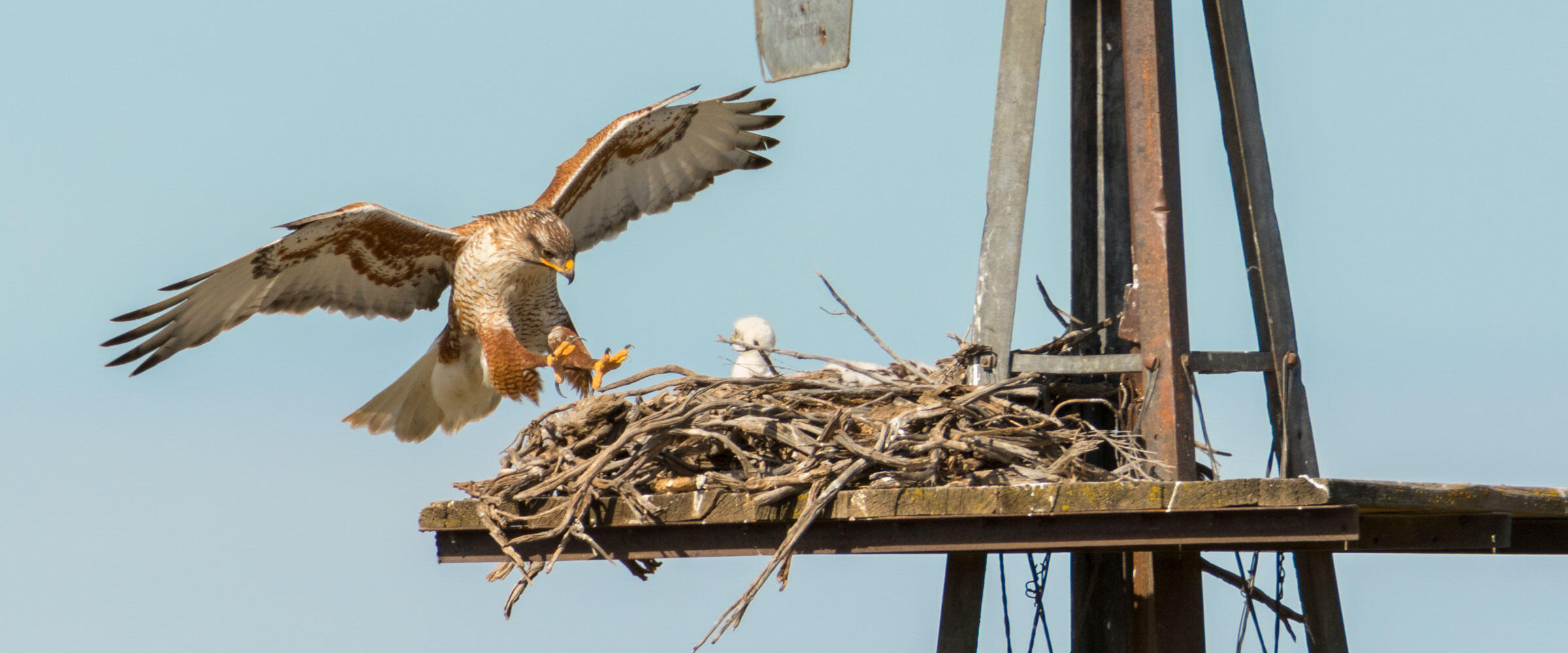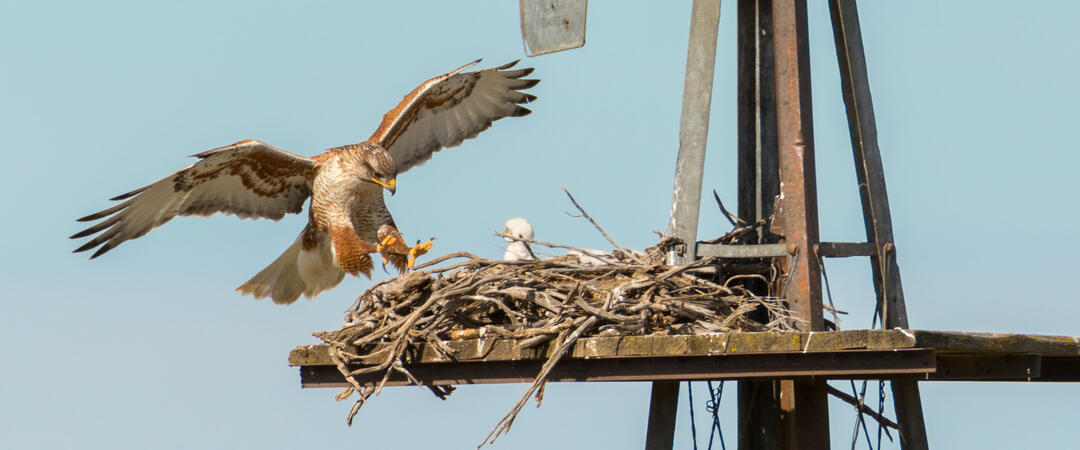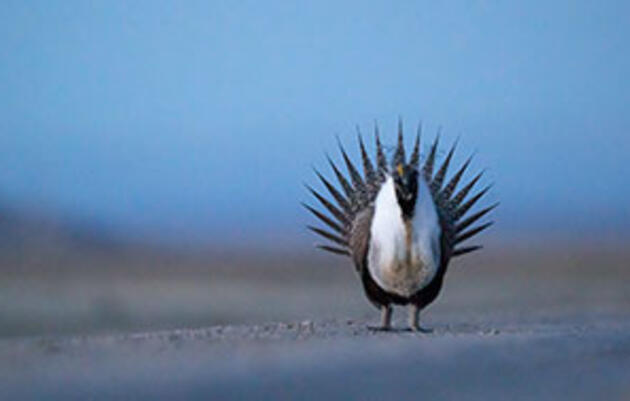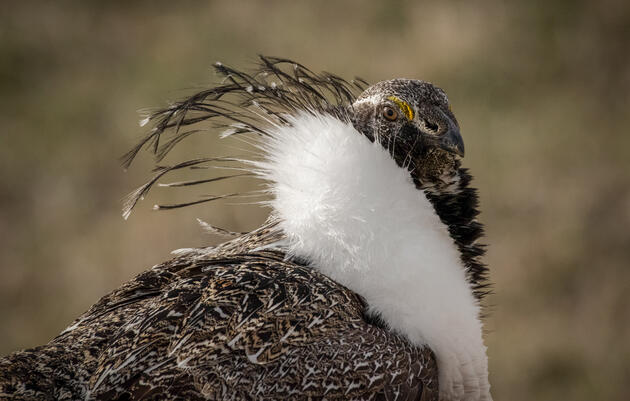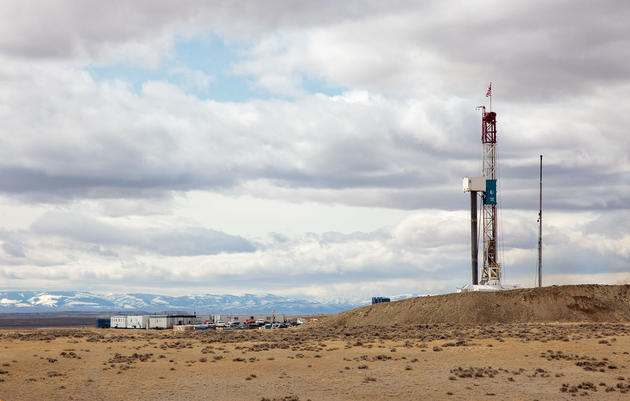Update: In late December of 2020, the Bureaur of Land Management approved the oil and gas project.
We had a deal: balance oil and gas with wildlife so that we could grow western economies reliably without spelling disaster for our lands and wildlife. In 2015, state governments, the federal government, private landowners, and other states formalized a plan to do just that.
But since the Trump administration’s energy dominance agenda, we’ve seen a singular value placed on public lands: energy generation. Protecting the habitat our wildlife need is being purposefully dismissed. Consequently, the number of acres leased per month in priority greater sage-grouse habitat across the West tripled between 2017 and 2019. Last May, a federal court struck down the basis of this flawed energy dominance agenda.
Part of that agenda included gutting the Migratory Bird Treaty Act (MBTA) through a legal opinion issued by the Department of the Interior (DOI) in December 2017. Up to that point, the MBTA had served as the foundation of American bird conservation law for 99 years. Then, on August 11, 2020, a federal judge overruled the DOI’s interpretation of the law, reaffirming that companies are legally required to take steps to prevent killing birds.
Now, the Bureau of Land Management is proposing one of the country’s largest energy development projects, a 1.5 million-acre oil and gas project in prime raptor and sage-grouse habitat in Converse County, Wyoming. The project encompasses an area the size of Delaware and would drill 5,000 new wells and build 500 miles of gas pipelines, 900 miles of water pipelines, new roads, and electrical lines within that area.
The area where all this is planned is rich with sensitive wildlife. Forty-six Greater Sage-Grouse mating sites and 1,124 raptor nests have been documented in the area. Mule deer, pronghorn, Ferruginous Hawks, Burrowing Owls, Great Horned Owls, Merlin, and other species would also be impacted by habitat loss and human activity as the area becomes an industrial site.
This is a glaring example of a short-sighted and broken federal approach to natural resource management, one that aims solely to bring benefits to one industry while turning a blind eye to all other values. It would dramatically weaken wildlife protections and waive those that were agreed to in the Casper Resource Management Plan. Key among those are restrictions on drilling during sage-grouse and raptor nesting seasons when the birds are most vulnerable.
I understand the need to strengthen Wyoming’s economy during this incredibly difficult time. Oil and gas can help, but not like this. Not with blatant disregard for national environmental law and wildlife. Not by ignoring science. Not by waiving important protections to Greater Sage-Grouse and raptors.
Doing so will only lead to more court cases and wasted time. How do we know this? Because it’s already happening. Last May a federal judge invalidated 440 lease sales in sensitive sage-grouse habitat in Wyoming, Nevada, and Utah, potentially costing Wyoming $44 million.
This development wonderland in Converse County is not going to last. When the project is challenged and defeated, Wyoming’s government, communities, and energy companies are going to suffer. By disregarding laws like the Migratory Bird Treaty Act, this project will only stifle Wyoming’s economic recovery.
For these reasons and more, Audubon submitted a formal administrative protest with robust legal and scientific arguments in opposition to this project on August 31. The protest alleges violations of the National Environmental Protection Act and the Federal Land Policy and Management Act regarding impacts to Greater Sage-Grouse.
Rather than charging forward with unrealistic projects that prioritize oil and gas above all else, we should be planning energy development in balance with wildlife and accordance with national law. I challenge our leaders to creatively build jobs and communities in ways that ensure Wyoming’s wildlife and landscapes remain for future generations.

